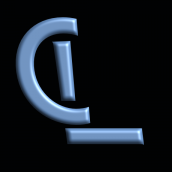Search the Community
Showing results for tags 'export'.
-
The export options for TIFF files always remember the last setting, rather than defaulting to the document color mode. I.e. if the last export was CMYK, the default the next time will be CMYK, even if the document is RGB, and the other way round. This is dangerous since it makes it easy to perform unintended color space conversions on export. Especially beginners who may not know about RGB and CMYK or just trust the default export settings might be in for a nasty surprise. Ideally, the export settings would check if the color format in the export settings is set to the same thing as the same as the document color format and in that case offer the document color format of the next document the next time. If the user changes the setting to something else than the document color format, it would offer that specific setting the next time, regardless of document format. That way it won't get in the way of, say, someone trying to manually export 10 RGB documents as CMYK, but it also wouldn't catch someone exporting an RGB file to RGB TIFF by surprise if their last export was a CMYK document to CMYK TIFF.
-
Hi, I want to export a slice to an SVG file. That works so far, but I have one problem, see screenshot. I assumed that the slice defines the area what gets exported. Since some elements are now outside this area, these get exported too. Rendering my SVG not useable. I would like to avoid, that I have to design everything fitting my export area etc. Any idea what to do?
-
Hi I use http://uk.moo.comto print postcards. That works very well in most cases, but not when part of my picture is black/a silhouette. On https://support.moo.com/hc/en-gb/sections/200572484 they write "We use public ICC profiles, so if you preview and save your files using the 'Coated FOGRA39' colourspace, they will not be altered by our back end processes. [...] 'Adobe PDF/X-1a' preset. In the 'colour' box, select 'Coated FOGRA39' from the destination dropdown." Is this Adobe specific or is there a way to do it in AP? I looked a bit at the help texts & the export persona, but didn't find the answer.
-
when using an artboard I have to set it to transparent before I can export a slice PNG with a transparent background. That feels odd and adds a lot of extra work just for exporting. Look at Gravit for example. The background is fully ignored by the slice exporter and I can hand adjust it. Thats how in Affinity this should be. https://drive.google.com/file/d/0Byzv_NlyKp_2QU81N2RlT1c3b0E/view
-
- slice
- background color
-
(and 1 more)
Tagged with:
-
I bought Affinity Photo and Designer and want to support a great competitor to Adobe. I have run into a problem .. I wonder if you can help? I have an original design in Adobe Illustrator format - attached. backprop_error_example2.ai I have an export to PNG from Adobe ... also attached. Then I have a PNG export from Affinity Designer after it loads the AI file - also attached. You can see that: the quality of the text rendering is not as good the colours are not accurate (see the big rectangular blocks) the brushes (object outlines) are not that accurately reflected, they are too "heavy / bold" When importing I made sure "favour editable text over fidelity" is NOT ticked. I want fidelity. Not sure what this actually dees. On export I selected Lanczos not bilinear to improve partially the rendering. Some have said elsewhere that text should be converted to curves .. which I don't really want to do .. but as a test I did. The image is attached. converting text to curves (Layer -> Convert to Curves) then exporting as PNG has no significant effect. Any ideas? Going forward I'd like to start new designs with Designer but unfortunately I have a legacy of AI files and I need their output to be consistent with previous exports. Thanks in advance.
-
Hey, I need to export a bunch of artboards (hundreds) and their layers separately with their name being something like this: [suffix][Artboard Name]_[Layer Name].png With the Slices panel in export you can already specify the Suffix and Slice/Layer name for multiple exports, but with every artboard name being different you cannot use suffix to specify artboard name. Is there a way to specify user variable for artboard name the layer is in? It would be all the better if this could be done from the Artboards own slice and not specify each layer individually as a separate slice. if not then I would request this to be a feature.
-
Hello there, I work in AD. The software is great, thanks for that. I need to export to PDF or SVG or EPS, does not matter to me ... including layers, that I could open the file in Adobe Illustrator and could see the layers. I was trying to find out on affinity forum, but I was not successful. Is there a way to do that please? Unfortunately, exporting to PDF does not do the job. Nothing is rasterized and after opening in illustrator there is just one layer instead of 3 created in AD. And what more, there are separated objects, the ones with fill and the ones with strokes. I mean, in AD it is an object with fill and stroke and after exporting to PDF and opening in AI these are two different objects, one with stroke and one with fill. I don't know why is that ? Thanks for help. I attached a file. 1100235_58_ultra_terno.afdesign
-
DPX and J2C are common exchange formats in film business. Could you please add it to the süpported file formats for import and export? best regards and thank you very much for the good work Auggie
-
- format support
- import
- (and 4 more)
-
I'm not sure if there is anybody who asked this before, but i just wanna know why we can't save as or export to .ai or .cdr or maybe other extension instead of affinity file? Is it because of something like copyright (?) limitation or will it be a new feature in the future? Thanks
-
Reading the AD forums regarding the ability to create multi-page documents is unlikely to happen as this would be a feature for Publisher when it is released. But what about the ability to export to PDF docs that are open in Designer to create a multi-page document. I am working on a two sided and four sided spread and while building each page in Designer is relatively simple, getting the PDF's created for the print shop is a regal pain. But if there was a PDF export option where would select "all open file" that would do the job as well as not infringing too deeply on the Publisher design goals. The same logic could also be applied to Photo as well. Possibility? MK
- 7 replies
-
- Multi-Page
-
(and 2 more)
Tagged with:
-
I'm having difficulty exporting a simple design as a PNG file & keeping the transparency that I want. The output files has a white solid non-tranparent background. Why is this? I was expecting it to be transparent & show up as a greyed out chequerboard. But it doesn't, I assume I have to check a box somewhere in the process, but can't find one that's relevant. Could someone point me in the right direction please.
-
Hi guys, tiny problem in the export algorithm: This is what AP shows me (and what it should be like): And this is what IrfanView shows me as the exported JPG (85% Quality) file: Not good ... certainly not something I can work with on a daily base ... Can't always check that every layer is exported properly. Certainly a serious problem, since JPG is one of THE essential export formats ... Please check this .. Cheers, Timo
-
For creating windows installer images .bmp and .ico files are required. It would be great to be able to able to export in these file formats. Thanks, Christian
-
Hi! I just bought Affinity Photo for Mac. While I was trying to get used to all of the features, I tried exporting a JPG photo, taken with a D7200 and with a size of 3.2 MB and the resulting file with 100% quality and no modifications has a size of 23.36 MB. Why is this happening and what can I do? I mean, it's the same file, it's not modified but has a bigger size after exporting. I'd expect a file with the same size or at least a similar size. Thank you!
-
Similar to IOS, Android icons are exported at different scale factors. Please add the option export slices to the standard android sizes: e.g. if the icons in the designer file are MDPI (this is equiv of ios 1x), then the scale factors for each android sizes are: xxxhdpi: 4.0 x mdpi size xxhdpi: 3.0 x mdpi size xhdpi: 2.0 x mdpi size hdpi: 1.5 x mdpi size mdpi: 1.0 (baseline) ldpi: 0.75 x mdpi size Taken from: http://developer.android.com/training/multiscreen/screendensities.html and here: http://stackoverflow.com/questions/18655194/scale-factor-for-xxhdpi-android Ps: i see in the video, that you have tick boxes for ios 1x, 2x etc, so i assume you could have additional one for android (mdpi, hdpi, xhdpi, xxhdpi):
-
Hi, I am currently stuggling to export very simple shape with a shadow to SVG using Affinity Designer (Windows). The design is quite simple: It comprises two rectangles - one in red without a border and one in grey. The grey one works as a shadow. Therefore a Gaussian blur was applied ( I know there is an extra function to add shadows, but that one was not used). When trying to export this to SVG, AD wants to convert the grey rectangle to a bitmap. That leaves the SVG useless for me. I am surprised by this behavior as there is a gaussian blur filter in the SVG definition. Just to give an example of the usage of the "feGaussianBlur" in a SVG file: <?xml version="1.0" encoding="ISO-8859-1" standalone="no"?><!DOCTYPE svg PUBLIC "-//W3C//DTD SVG 20010904//EN" "http://www.w3.org/TR/2001/REC-SVG-20010904/DTD/svg10.dtd"><svg width="380px" height="370px" xmlns="http://www.w3.org/2000/svg" xmlns:xlink="http://www.w3.org/1999/xlink"> <title>The simple feGaussianBlur filter</title> <desc> Example of usage </desc> <defs> <style type="text/css"> <![CDATA[ text {font-family:Verdana,sans-serif; font-size:16px; font-weight:bold;} ]]> </style> <symbol id="smilie"> <desc>ein lachendes Smilie</desc> <circle id="gesicht" cx="20" cy="20" r="15" fill="yellow" stroke="black" /> <circle id="auge-links" cx="15" cy="15" r="2" fill="black" stroke="black" /> <circle id="auge-rechts" cx="25" cy="15" r="2" fill="black" stroke="black" /> <line id="nase" x1="20" y1="18" x2="20" y2="23" stroke="black" stroke-width="2" /> <path id="mund" d="M 13 26 A 5 3 0 0 0 27 26" stroke="black" fill="none" stroke-width="2" /> </symbol><!-- 6 Filter mit feGaussianBlur --> <filter id="f1"> <feGaussianBlur in="SourceGraphic" stdDeviation=".5" /> </filter> <filter id="f2"> <feGaussianBlur in="SourceGraphic" stdDeviation="1" /> </filter> <filter id="f3" x="-20%" y="-20%" width="150%" height="150%"> <feGaussianBlur in="SourceGraphic" stdDeviation="1.5,.5" /> </filter> <filter id="f4" x="-20%" y="-20%" width="150%" height="150%"> <feGaussianBlur in="SourceGraphic" stdDeviation=".5,1.5" /> </filter><!-- zusätzlich mit feBlend, feOffset und feMerge --> <filter id="f5" x="-20%" y="-20%" width="150%" height="150%"> <feGaussianBlur in="SourceGraphic" stdDeviation="5" result="out1" /> <feBlend in="SourceGraphic" in2="out1" mode="darken" /> </filter> <filter id="f6" x="-20%" y="-20%" width="150%" height="150%"> <feGaussianBlur in="SourceAlpha" stdDeviation="2" result="out1" /> <feOffset in="out1" dx="2" dy="-2" result="out2" /> <feMerge> <feMergeNode in="out2" /> <feMergeNode in="SourceGraphic" /> </feMerge> </filter> </defs><!-- die Instanzen des Symbols "smilie" --> <use xlink:href="#smilie" transform="translate(20,10) scale(2.7)" /> <use xlink:href="#smilie" transform="translate(150,10) scale(2.7)" filter="url(#f1)" /> <use xlink:href="#smilie" transform="translate(250,10) scale(2.7)" filter="url(#f2)" /> <use xlink:href="#smilie" transform="translate(150,130) scale(2.7)" filter="url(#f3)" /> <use xlink:href="#smilie" transform="translate(250,130) scale(2.7)" filter="url(#f4)" /> <use xlink:href="#smilie" transform="translate(150,250) scale(2.7)" filter="url(#f5)" /> <use xlink:href="#smilie" transform="translate(250,250) scale(2.7)" filter="url(#f6)" /><!-- Text und Hilfslinien --> <text x="145" y="130">feGaussianBlur</text> <text x="58" y="130">Original</text> <line x1="137" y1="40" x2="137" y2="330" stroke="black" /></svg> Is there a workaround availabe to force AD not to convert objects into a bitmap during export? Thanks, Volker
-
Hello there, just bought Affinity Designer for Windows and was exporting some PNG test files. But the file sizes are 10 times larger or more compared to Adobe Illustrator for the same shape and size. I exported a simple 256 x 128 oval with a gradient (32bit png, Affinity Designer), that became 23.2kb same thing from Adobe Illustrator is only 2.80kb. I also tried a simple gradient at 1920 x 1080 from Affinity Designer that became a whopping 1.26 Megabyte while the same thing from Adobe Illustrator was a measly 10.5kb. Is the exporter bugged? Please note that the visual quality is indistinguishable between Affinity Designer and Adobe Illustrator(The better compression doesn't affect the visual quality). File sizes are vital to me as I am going to make art for Game Maker Studio and I need to save as much memory as I can. Thanks in advance.
-
Obwohl ich Text in Schwarz (RGB 0-0-0) angelegt habe, wird er im PDF-Export zur Mischfarbe (CMYK 89-78-62-97). Was mache ich falsch? Although I created text in black (RGB 0-0-0), he becomes in the pdf export the mixed color (CMYK 89-78-62-97). By the way: I tried CMYK 0-0-0-100, also the Black/White Circle. No differenz. What do I make wrong? Kalle
-
Hi, I'm fairly new to using Affinity Designer after switching over from Adobe Illustrator. I am basically working on a document which has vector/JPEG objects inserted. It is intended for print, but I would also require a digital version for web purposes. When I export the document as a PDF for print at 300dpi, it seems fine; the JPEG images look sharp as well as the vectors (just as everything looks when working on the document at 100% scale). But when I export the same document as a PDF for web at 72dpi, all of my vectors are nice and sharp, the document is the right size, but my JPEG images become extremely pixelated. I've attached a snippet from an exported web PDF. Document information: Type: Print Page Preset: A3 300DPI Any ideas as to why this might be happening?
-
Is export crippled on the Photo Windows beta? I just want to check that that is indeed the problem and not something else before I spend my money on the proper version. What is happening is that I go through the export dialogue, but when the save dialogue comes up, Affinity is the only file format offered.
-
Hi all, I'm a new user to Affinity Designer and have been trying it out. In general I find the 1.5 update to be most interesting, especially with the addition of features like Symbols. I found a problem while exporting that I'm not sure if it should be considered a bug or not. I tried to pixelate a text, and make an artwork out of it. However on export, it becomes intensively smoothened out and blurry, in all resampling modes except Nearest Neighbour. Please open the images to a see their full resolution. Nearest Neighbour: Bilinear: I could export it with Nearest Neighbour, but that means all my other artwork in the image wouldn't get properly antialiased. After a lot of trial and error, I figured it's a problem with transparency, and indeed if I group it with a white background and then rasterise it, I get the expected result. However that workaround is limited, since many times I do want it to be transparent. For case-control I tried the same thing in Illustrator, and indeed the export has no problems replicating what I see in the software, while being transparent: So in the end, I would guess this extreme blurring is not natural. It's either a user error (please feel free to educate me on it), or it's a bug / something to be improved in the future? P.S. It's worth noting that illustrator has a number of helpful options when rasterising, that I expected to have control over in Designer as well. Such as the dpi to be rasterised in, the resampling method (Tinted for Typography can be useful in such cases) etc. I know Designer is still young, so consider it a feature request :)
-
- export
- resampling
-
(and 3 more)
Tagged with:






















